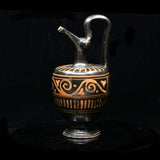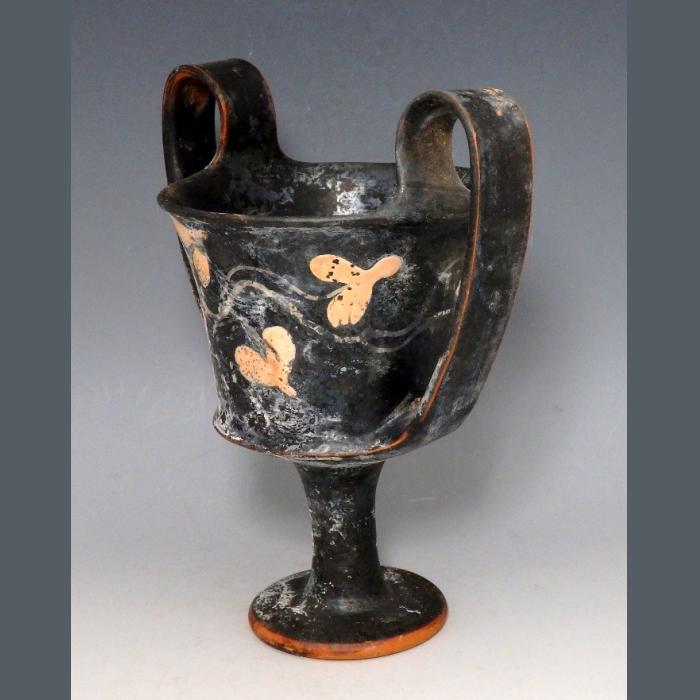

Plain to see within the structure and fabric of the great cathedral, were the columns of the Sanctuary of Athene. After wandering round the edge of the temple I struck right into a labyrinth of narrow medieval streets and came at last to the Duomo. Here I found the remains of the Temple of Apollo: tall columns rising among a mixture of modern and renaissance buildings at a busy city junction. Then I followed the signs to Ortygia, an island attached to the mainland on its northern edge, which during the seventh to fourth centuries BC was the heart of this powerful city-state. Here 6,000 Greeks were imprisoned during the war between Athens and Syracuse. I avoided the industrial northern town (sign-posted on the auto-strada) and made first for the Parco Archeologico Della Neapolis where I found a Greek theatre set in gardens of oleander, bougainvillaea and frangipani and a huge cavern quarried from limestone (with an extraordinary echo). My next pilgrimage took me across a rugged mountainous landscape – Etna gently steaming in the distance - to Syracuse ( Siracusa) on the east coast of Sicily. A reconstructed Doric temple and above it a theatre with splendid views over Castellammare del Golfo gave me my first glimpse of the elusive past. The ancient Greek city of Segesta was built on a rocky mountainside. My first trip, an hour’s drive along the auto-route west (follow signs for Trapani) was to Segesta. I had only one week so I selected my sites carefully. Having found out a little about Magna Graecia then, I flew to Palermo, picked up my hire car and began my quest. Overpopulation and land hunger were others but the Spartans, who founded Tartenum for instance, sent their illegitimate men to Italy because they were deemed troublemakers. Why did they leave the motherland in the first place? Trade was one incentive. They became independent communities but maintained commercial links with the mainland city-states and kept up the traditions, religious rites, language and political structures of the motherland. Once established the colonists built a citadel, temples, altars and the agora. When choosing a site, the colonists looked first for a defensible position perhaps on a peninsular or an off-shore island with a steep acropolis. Magna Graecia became the centre for two philosophical groups: Parmenides founded a ‘school’ at Elea and Pythagorus another at Crotone. It wasn’t all high living and decadence, though. Trade between the Italian colonies and their founding cities in mainland Greece, prospered and artists, entertainers and the famous Corinthian prostitutes were tempted perhaps by the ‘Hollywood’ like life style to settle in the thriving communities. Chefs were in great demand as were all manner of exotic entertainers. Their banquets were legendary and the culinary arts encouraged. The rich plaited gold into their hair and wore cloaks of the finest Milesian wool. There was a law in Sybaris (hence sybaritic), which prohibited the crowing of roosters within the city limits because the nobility valued their sleep so highly. Their temples were bigger, their houses more ornate and their aristocracy lived a life of pampered luxury. In their hey-day these city- states, founded by farmers, traders and craftsmen, represented the nouveaux riche of the Greek world. Greek colonists founded a number of city states on both coasts of the peninsular from the Bay of Naples and the Gulf of Taranto southwards and all round the narrow coastal plain of Sicily. This is what I found out: The Greek expansion into South Italy and Sicily began in the eighth century BC. Looking back at the history of Magna Greciaįirst I did some research.


I’d done all that: Rome, Pompeii, Herculaneum. The Romans usually represent the ancient past in Italy. I don’t know about you, but I find all this amazing so I set out to find where these ancient peoples lived.

These people are the last remnants of Magna Graecia, an area of Southern Italy and Sicily that was colonised by the ancient Greeks. When a Greek president visited some of these settlements, he was welcomed by people that speak a dialect, Griko that is based on ancient Greek. In Bovesia – Calabria – five thousand residents have preserved their language and culture for over two thousand years. In Apulia some 15,000 people still speak the ancient Greek dialect. Why? Because, during earlier trips to Apulia, and Calabria I discovered villages, where a form of Greek was still spoken. During my last visit to Italy I was on a mission: to track down the ancient Greeks.


 0 kommentar(er)
0 kommentar(er)
